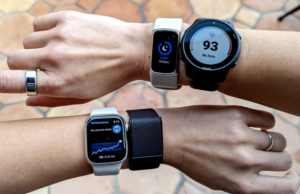Muscle memory – it’s a term we’ve all heard before. But what exactly does it mean, and why is it so important for fitness enthusiasts and athletes alike?
Simply put, muscle memory is the process of the body adapting to certain movements over time, making them easier to perform with increased efficiency and accuracy. But developing muscle memory isn’t just about improving physical performance – it’s also essential for brain development.
How to Develop Muscle Memory?

To develop muscle memory, you need to consistently practice the same movement pattern over and over again until it becomes ingrained in your muscles. For example, if you are learning a new exercise, you should start by performing it slowly and with proper form. Then, gradually increase the speed and intensity while maintaining the correct technique.
Why is Muscle Memory Important for Brain Development?

Muscle memory is not just important for improving physical performance, but it also plays a crucial role in brain development. According to research, when you learn a new movement, the brain creates new neural connections. These connections become stronger over time as you repeat the movement, eventually forming a “map” in your brain that allows you to perform the movement automatically without thinking about it.
What Happens in The Muscles?
When you perform a movement repeatedly, the body adapts by creating new muscle fibers and increasing the size of existing ones. Additionally, the body learns to recruit more muscle fibers to perform the movement, resulting in increased strength and efficiency. This process is called hypertrophy and is essential for muscle growth and development.
Tips to Create Muscle Memory

Here are some tips you can follow:
- Start Slow: When learning a new movement, it is essential to start slow and focus on proper form. This will help you avoid injuries and ensure that you are engaging the correct muscles.
- Practice Consistently: To develop muscle memory, you need to practice consistently. Aim to perform the movement several times a week, gradually increasing the intensity over time.
- Use Mindfulness Techniques: Self-awareness and mindfulness can help you develop muscle memory more effectively. Focus on the sensations in your body as you perform the movement, and visualize yourself performing it correctly.
- Vary Your Workouts: To prevent plateaus and continue developing muscle memory, it is essential to vary your workouts. Try different exercises that target the same muscle group, or add in new movements that challenge your body in different ways.
By consistently practicing movements, the body adapts by creating new muscle fibers, increasing the size of existing ones, and learning to recruit more muscle fibers. To create muscle memory, start slow, practice consistently, use mindfulness techniques, and vary your workouts.
Boost Yourself!
Looking for a place that pushes your potential and helps you move forward? You can check out Boost, a studio especially curated to help empower you to make a difference and move your best step forward – because when you empower your body, you empower your mind too!










